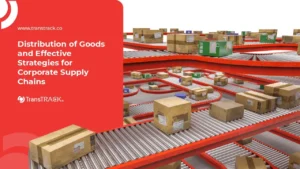Know What is CBM (Cubic Meter) and Its Function in the Cargo Shipping Industry
Posted on November 9, 2023 by Nur Wachda Mihmidati

In the world of logistics and shipping, you may have heard of the term “CBM” or “Cubic Meter”. Cubic Meter is a term in the world of cargo and logistics that has an important role. One of its functions is to determine shipping rates or costs.
To determine the total Cubic Meter value, a certain formula is needed. For those of you who are curious and want to know how to calculate it, see the following article TransTRACK. This article will explain in full about what CBM is, why CBM is important in cargo services, and how to calculate it. Let’s start the discussion right away!
What is CBM (Cubic Meter)?
CBM stands for “Cubic Meter” or in Indonesian, “Cubic Meter”. Cubic Meter is a unit of volume measure used in the cargo and shipping or logistics industry. Cubic Meters measure how much goods can be transported in one cubic meter. In simple terms, Cubic Meter is a way of measuring how much space will be filled by goods in one cubic meter.
Unlike regular shipping, Cubic Meter measurement is generally used in the cargo industry or containerized shipping which prioritizes volume over weight. So, Cubic Meter measurement cannot be applied in all types of freight shipments.
Function of CBM in Cargo Industry
As a volume measurement concept, Cubic Meter has several important functions in cargo services:
Accurate Volume Measurement
One of the most basic functions of CBM is as a tool to measure the volume of goods more accurately. In the cargo industry, often goods are classified by volume rather than weight. This is very important when you want to know how many items can be transported in a particular vehicle or container.
Capacity Planning and Space Utilization
CBM allows cargo companies to plan storage and shipping capacity more efficiently. By knowing how many goods can be transported in one Cubic Meter, companies can maximize the use of space in warehouses and in shipping containers.
Calculation of Shipping Costs
A very important function of CBM is to calculate the cost of cargo shipment. Many cargo companies charge based on the volume of goods shipped. This means, even if your item has a light weight, but a large volume (high in Cubic Meters), the shipping cost can be higher than an item with the same weight but smaller volume.
Better Stock Management
In a cargo business that involves storage in a warehouse, an understanding of Cubic Meters is essential. It allows companies to better manage stock, determine how much space is needed for a particular stock, and optimize warehouse usage.
How to Calculate CBM
Calculating Cubic Meters may seem complicated, but it’s actually quite simple. You just need to measure the length, width, and height of your item in meters. Then, you multiply these three dimensions to get the result in cubic meters. The formula is:
Cubic Meter = Length (m) x Width (m) x Height (m)
For example, if your item is 2 meters long, 1.5 meters wide, and 1 meter high, the calculation is:
Cubic Meter = 2m x 1.5m x 1m = 3 m3
Then, to total the amount of CBM of all the goods to be delivered use this formula:
Total CBM = CBM x Number of Items
Suppose you have 10 boxes of goods with the same volume, then the result is:
Total CBM = 3 x 10 = 30 m3
Then what if some items do not have the same volume? No need to be confused, you just need to add them. For example, you have 5 boxes of goods with each volume 2 m3, 3 m3, 5 m3, 8m3, 7m3. Then the total result of CBM is:
2 + 3 + 5 + 8 + 7= 25 m3
Simple, isn’t it?
1 CBM How Many KG?
This question often arises when talking about CBM. Actually, there is no definitive answer because 1 CBM is not equivalent to a specific weight. Instead, 1 CBM how many KG will depend on the specific gravity of the item you are shipping. Specific gravity is the weight per unit volume and is calculated in KG per Cubic Meter.
To calculate the actual weight (KG) of 1 CBM, you need to know the specific gravity of the item. With the formula:
Weight (KG) = CBM x Specific gravity (KG/Cubic Meter)
For example, if the specific gravity of your item is 250 KG/Cubic Meter, then 1 CBM of the item will weigh approximately 250 KG.
With an understanding of CBM and specific gravity, you can more accurately calculate the actual weight of the item’s volume.
Now, you have a better knowledge of the Cubic Meter and how it functions and affects cargo services, right? With this understanding, you can manage cargo more efficiently and calculate shipping costs more precisely.
In the world of modern logistics, technology increasingly supports efficiency in cargo management. One tool that can help you track and manage your shipments is Cargo Tracker from TransTRACK. This tool is designed to provide better visibility into your shipments.
You may ask, “What does Cargo Tracker have to do with Cubic Meter?” Well, this cargo tracking tool can help you monitor space usage and ensure that the goods being shipped match the calculated CBM estimate. Thus, you can optimize the use of storage space and reduce the risk of unexpected shipping costs.
Cargo Tracker is a practical solution for monitoring your shipments. It has features such as real-time tracking, notifications, and data analysis that can help manage cargo more efficiently.
So, how does this tool work in the context of CBM? This tracking tool provides better visibility into the shipment of goods, including information on how much volume your goods are occupying. You can monitor shipments in real time and identify if there are any changes in the volume shipped. That way, you can immediately take the necessary actions, such as re-planning shipments or optimizing the use of storage space.
That’s all for this discussion, hopefully this information is useful in your business and cargo activities.
Recent Post
Topic :
Recommended Articles

 Bahasa Indonesia
Bahasa Indonesia







